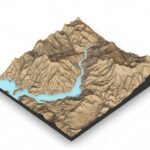Learning to draw can seem daunting, but with the right approach and consistent practice, anyone can develop their sketching skills. This comprehensive guide breaks down the process into simple, manageable steps, empowering you to draw anything you desire. No prior experience or special talent is needed – just a willingness to learn and a bit of dedication.
Warm-up Exercises for Hand-Eye Coordination
Before diving into drawing, warming up is crucial. This helps loosen your hand muscles and familiarize yourself with your drawing tools. Start by experimenting with various mark-making techniques:
- Scribbling and Doodling: Let your pen flow freely across the paper, creating random lines and shapes.
- Dots and Stippling: Create different textures using dots of varying sizes and density.
- Hatching and Cross-Hatching: Practice drawing parallel lines and intersecting lines to create shading and depth.
- Zigzag Lines: Explore the dynamic quality of zigzag lines.
- Varying Pressure: Experiment with applying different amounts of pressure to your pen to create a range of line weights.
Next, practice drawing basic lines and shapes:
- Straight and Curved Lines: Draw lines of varying lengths and directions.
- Circles and Ellipses: Practice drawing round shapes of different sizes.
- Loose Shapes: Try drawing figure eights and other flowing forms.
Drawing with Basic Shapes
The foundation of drawing lies in understanding basic shapes. Everything you see can be broken down into circles, rectangles, and triangles. By mastering these shapes, you can draw anything:
- Identify Basic Shapes: Analyze your subject and identify the underlying geometric shapes.
- Light Lines: Use light, loose lines to sketch these shapes onto your paper, focusing on proportions.
For example, a flower can be simplified into a circle for the center and ovals for the petals. Don’t worry about perfection at this stage; focus on capturing the overall form.
Refining Your Drawing
Once you have a basic underdrawing, it’s time to refine your sketch:
- Check Angles and Edges: Carefully observe your subject and compare the angles and edges to your drawing. Make adjustments as needed.
- Solid Lines: Define the contours of your drawing with more confident, solid lines.
Practice with Quick Sketches
To solidify your understanding of shapes and proportions, practice drawing quick, gestural sketches. Choose a simple object and draw it repeatedly from different angles. Focus on capturing the essence of the object rather than creating a finished drawing.
Adding Details and Contrast
Once you’re comfortable with basic shapes and proportions, you can start adding details:
- Contrast: Identify areas of light and shadow and use shading to create depth and volume.
- Texture: Experiment with different mark-making techniques to suggest texture.
- Focal Point: Add more detail to the areas you want to emphasize, drawing the viewer’s attention.
Remember not to overdo the details. A few well-placed accents can be more effective than excessive detail all over the drawing.
Embrace Mistakes and Continue Learning
Learning to draw is a journey, and mistakes are inevitable. Don’t get discouraged by them. Instead, view them as opportunities to learn and improve. The more you practice, the better you’ll become.
To further develop your skills, explore more advanced concepts like perspective, values, and foreshortening. There are countless resources available to help you on your drawing journey.
This foundational guide provides a solid starting point for learning to draw. With dedication and practice, you can unlock your artistic potential and bring your creative visions to life.


